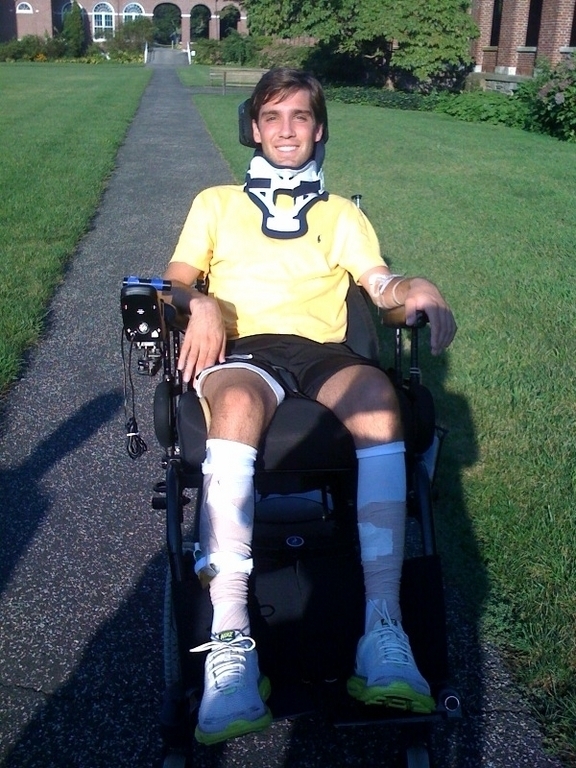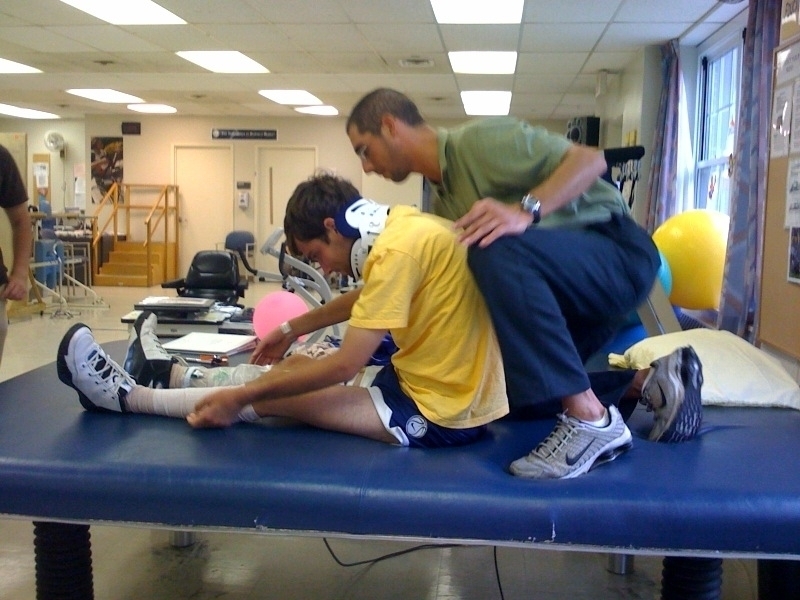Star runner struggles to walk after accident
West Hempstead native, Chaminade and Duke alumnus, battles his injury
Two percent.
That was the chance doctors gave Kevin McDermott, a West Hempstead native, of moving his legs again.
Those legs had propelled McDermott to a state championship in the steeplechase as a member of the Chaminade High School track team. Those legs had carried the High School All-American to the U.S. Junior Olympics and to Duke University.
In May, McDermott, 22, received his degree from Duke, where he starred on the cross-country and track teams. Less than two months after he graduated, he had a life-changing accident. Diving into a Hampton Bays swimming pool, he hit his head on the bottom, shattering the C5 cervical vertebra of his spinal cord.
“I knew right away it wasn’t good,” McDermott said. “All I could do was splash my head. I wasn’t scared, but I couldn’t get air. Then, out of nowhere, someone’s hand came to the side of my face, and all I was thinking was, 'Pick my head up.'”
McDermott was airlifted to Stony Brook University Medical Center, where he underwent emergency surgery. The doctors who assessed his spinal cord injury told him that his chances of regaining any movement below the neck were two percent.
But McDermott was not discouraged. “I knew that the only way to get better was to work my butt off,” he said.
“The accident happened on a Sunday, and he had his first major surgery the following day, on Monday,” recalled Kevin’s father, Mike. “The day after the surgery, Kevin was to meet with the physical therapists for the first time, and Kevin said, ‘Don’t give me any pain medication. I want to be able to be totally clear on what I need to do to get better.’ This was the day after his spinal surgery! Who does that?”
After two successful surgeries to stabilize his spinal cord, Kevin was transferred to the Burke Rehabilitation Hospital in White Plains, and his unyielding determination has helped him make great progress. He can now move his arms, lift his legs and stand with minimal support.
“The doctor said that in 20 years, he’s never seem someone go from a complete cervical spinal injury to an incomplete one,” he said. “It’s a miracle.”

 45.0°,
Partly Cloudy
45.0°,
Partly Cloudy 









